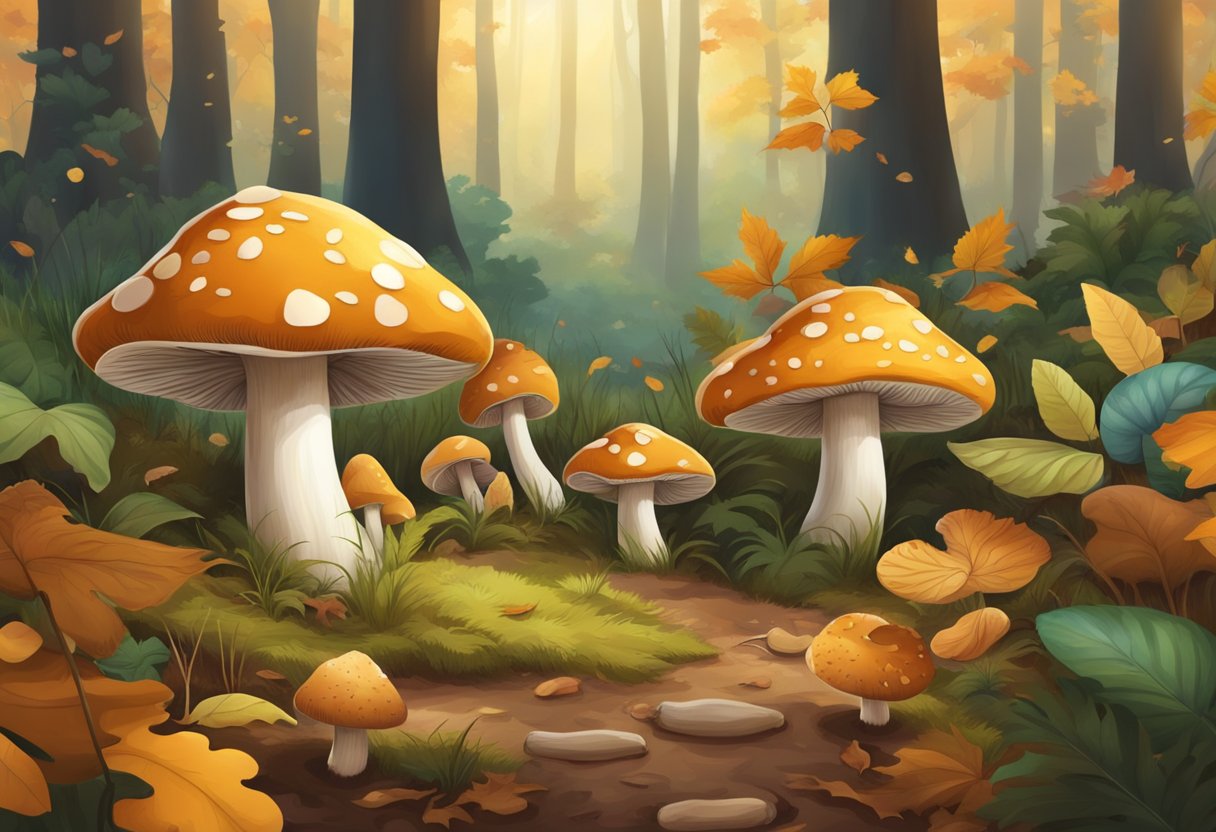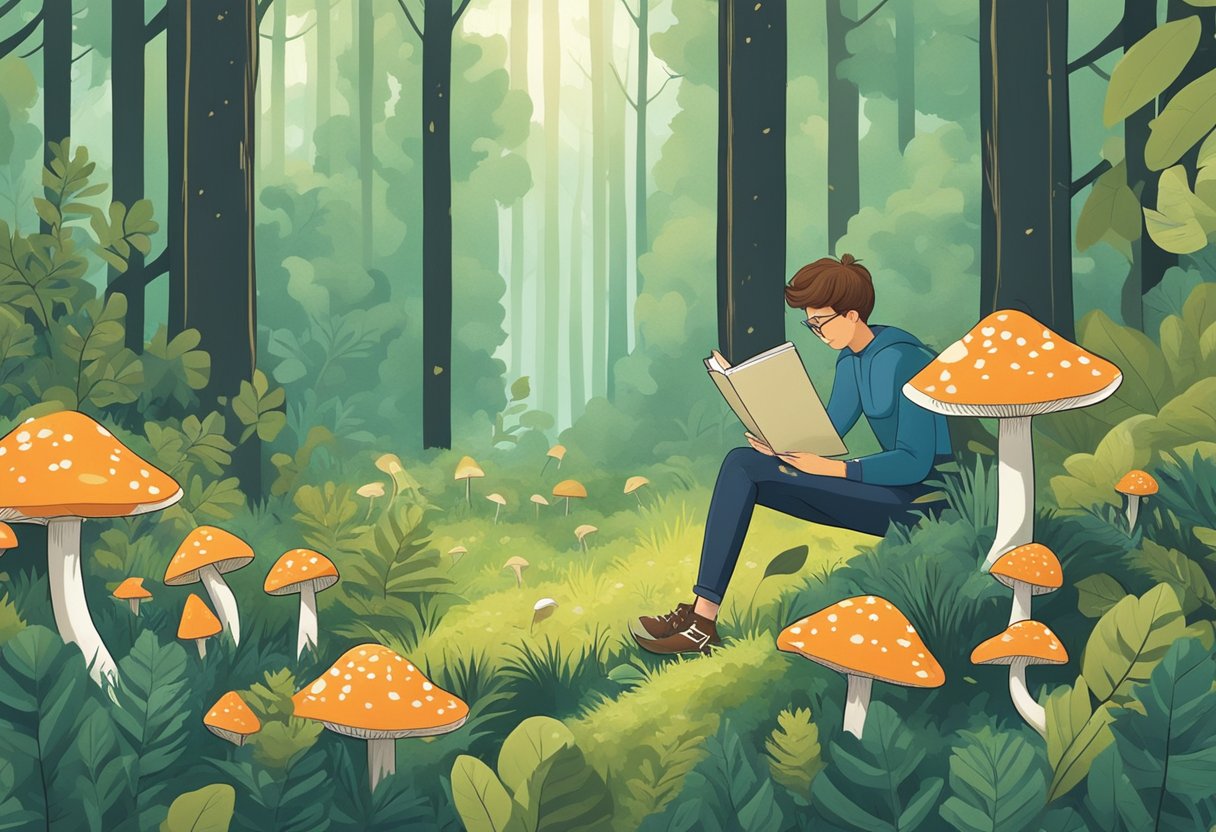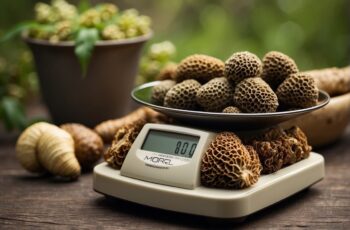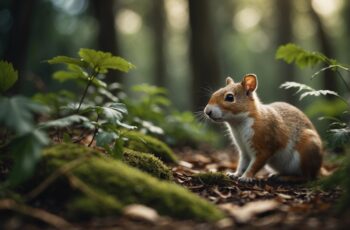Mushroom foraging is an engaging activity that enables nature enthusiasts to explore the environment while searching for edible wild fungi. Foragers scour forests, meadows, and parks to find these culinary treasures, with morel mushrooms being particularly sought after for their distinctive taste and appearance. Successful foraging requires knowledge of local species, hunting grounds, and the right seasons to ensure both safety and an abundant harvest.

With a basic understanding of the different types of mushrooms and their habitats, beginners can start this rewarding hobby. Identifying mushrooms accurately is crucial to avoid poisonous varieties, and taking part in local foraging tours and classes can provide the foundational knowledge required. Knowledge of properly storing morel mushrooms is also essential, to maintain their quality post-harvest.
Key Takeaways
- Foraging for mushrooms connects enthusiasts with nature and seasonal cycles.
- Accurate identification of mushroom species is crucial for a safe foraging experience.
- Knowledge of storage techniques is important to keep foraged mushrooms fresh.
Getting Started with Mushroom Foraging
Mushroom foraging connects individuals with nature, offering a way to identify and collect edible fungi. Proper education and equipment are paramount for both safety and success.
Basics of Mushroom Foraging
Before venturing into the woods, one must understand the importance of research and identification. Studying a reliable field guide enhances the ability to distinguish between safe and hazardous mushrooms. Education in mushroom foraging is vital; a novice should consider attending classes or workshops to gather in-depth knowledge on various fungi species. Safety is another critical aspect, as the consumption of the wrong mushroom can lead to serious health consequences.
Foragers are encouraged to familiarize themselves with common edible species and their look-alikes to better navigate the mushroom hunting landscape. Spending time in nature, specifically in diverse forests, increases one’s exposure to different types of mushrooms and foraging opportunities.
Essential Foraging Gear
Foraging gear is essential in ensuring a productive and enjoyable experience. A trustworthy mushroom hunting bag or basket is indispensable for carrying collected mushrooms, allowing spores to disperse and promote further growth. Additionally, a sturdy knife is crucial for cleanly cutting fungi without damaging the delicate underground structures. Providing protection and ease during a foray, the right tools, including comfortable clothing and waterproof boots, make a significant difference.
Moreover, carrying a mushrooming tool, like a brush to clean your finds in the field, is recommended. To optimize one’s foray, it might be worth considering a comprehensive foraging kit that compiles all the necessary items. The gear should support a forager’s ability to efficiently locate, harvest, and transport mushrooms.
Best Practices for Mushroom Identification
Understanding the process of safe and accurate mushroom identification is crucial for any foraging enthusiast. Mastery of identification techniques and distinguishing edible mushrooms from poisonous ones is foundational for foraging safety and mycological education.
Identification Techniques
It’s imperative to research and understand the key characteristics of mushrooms you intend to identify. Reliable identification starts with a careful examination of cap shape, color, size, gills, stem, and spore print. Chanterelles and morels can be identified by their distinctive features. For example, chanterelles have vibrant orange color and wavy caps, whereas morels are known for their unique honeycomb-like cap. Engaging with local mycology groups and using resources from a trusted library or guide can provide valuable hands-on education. The use of multiple sources, such as field guides and educational tools for identifying tree mushrooms, enhances accuracy.
Poisonous vs Edible Mushrooms
Every forager should invest time into understanding which mushrooms are safe to eat and which are not. There are numerous safe and edible mushrooms, such as those found in Oklahoma, which offer a variety of species to be enjoyed. However, caution is paramount, as many edible mushrooms have poisonous lookalikes. For instance, some edible mushrooms in Pennsylvania might resemble toxic mushrooms in Indiana, and it can be a matter of life or death to distinguish between them. To increase safety, foragers should consult comprehensive guides illustrating safe foraging, like the ones detailing safe varieties in Oklahoma. Additionally, developing a solid understanding of poisonous mushrooms, such as those found in Indiana, through specific information on local toxic varieties, is also crucial for foragers.
Foraging Locations and Seasons

Mushroom foraging can be a rewarding experience, offering both culinary delights and a deepened connection to nature. It’s important to know the best areas for foraging and the seasons when mushrooms are most abundant.
Prime Mushroom Hunting Areas
In North America, a forager can find a variety of mushrooms across different regions, each with their own prime locations. The Pacific Northwest is renowned for its lush forests where chanterelles and morels are especially abundant. For instance, the Olympic Peninsula in Washington provides ideal conditions for these sought-after species due to its moist, temperate climate. Moving east, the hardwood forests of Michigan and Pennsylvania are also prime spots for foraging, especially for morels in the spring.
West Virginia’s diverse terrains offer a rich ground for mushroom hunters, with morels appearing as early as March in warmer years. Heading into the Midwest, Minnesota‘s many state parks and forests become a mushroom hotbed during the moist seasons. For those down south, even Virginia’s mixed forests offer pockets of morel mushrooms awaiting discovery.
Understanding Foraging Seasons
The timing for foraging is just as crucial as the location. Each region has its own calendar where specific mushrooms are more likely to be found. For instance, morels appear in the spring across much of North America, often peeking through the forest floor as the earth thaws. It is widely agreed upon that after a rain, when the temperature has been just right—warm days followed by cool nights—is the best time to hunt these elusive fungi.
Chanterelles in the Pacific Northwest and the Bay Area can be foraged during the late summer and fall, as the damp conditions favor their growth. In contrast, if one is seeking mushrooms in Alaska, the window is much shorter due to the colder climate, with summer months being the most fruitful. For those near Oklahoma, understanding regional timing and adhering to local regulations is key for successful mushroom hunting expeditions.
For safe and successful foraging, always remember to verify the rules and regulations of one’s local parks or forests to ensure sustainable and legal practices.
Frequently Asked Questions

Exploring the world of mushroom foraging raises many questions about best practices, legalities, and safety. This section provides concise answers to some of the most common inquiries.
What are the best months for foraging mushrooms in California?
In California, prime mushroom foraging occurs from late fall through winter, especially after the first rains, typically between November and February.
How can I find a mushroom foraging class in Southern California?
One can find a mushroom foraging class in Southern California through local mycological societies, outdoor groups, and educational institutions specializing in foraging and mycology.
What should I look for when choosing a mushroom foraging course?
When selecting a mushroom foraging course, look for experienced instructors, topics covering identification of both edible and poisonous varieties, and hands-on experience in the field.
Are there any recommended foraging trails for mushrooms in Santa Cruz?
Santa Cruz offers a variety of forested trails conducive to mushroom foraging, particularly in the county’s parks and protected areas that permit such activities. It’s advisable to check with park regulations before heading out.
What are the legal guidelines for mushroom hunting in Texas?
Mushroom foraging in Texas is permitted, but foragers must adhere to state and local harvesting laws, which often include obtaining a permit and following sustainable harvesting practices to preserve ecosystems.
How do I identify edible mushrooms during a foraging walk?
Identifying edible mushrooms during a foraging walk requires knowledge of local species, where recognizing distinctive features like cap shape, color, spore print, and habitat is crucial. Always consult with a field guide or expert as misidentification can be dangerous.


